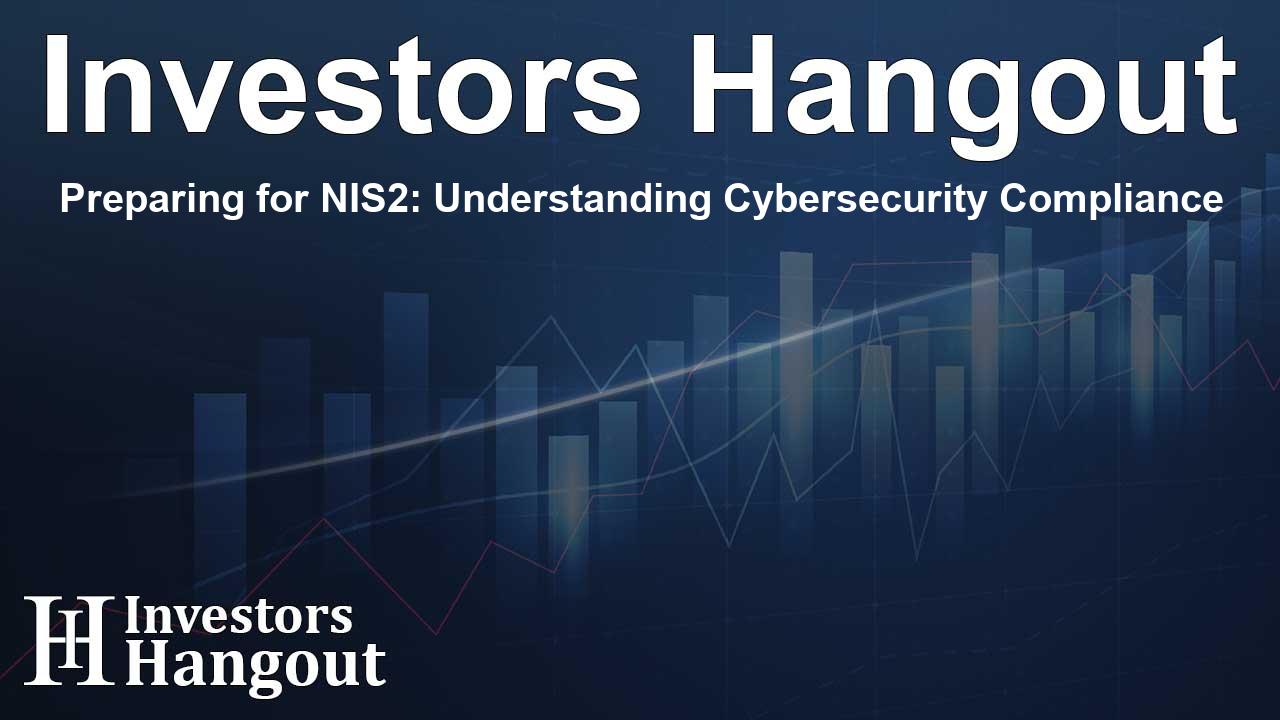Preparing for NIS2: Understanding Cybersecurity Compliance

Understanding NIS2 and Its Impact on Organizations
As the European Union's Network and Information Security Directive (NIS2) approaches its implementation date, organizations are grappling with the requirements and implications of this new regulation. NIS2 aims to reinforce cybersecurity standards across member states, implementing stringent penalties for non-compliance. With fines reaching up to EUR 10 million or 2% of total annual global turnover, companies are under pressure to align their cybersecurity strategies with these new expectations.
Survey Insights on Compliance Perspectives
A recent survey by Censuswide uncovered that 43% of EMEA IT decision-makers believe that NIS2 will significantly bolster cybersecurity in the EU. However, despite an alarming 90% reporting at least one security incident in the last year that could have been mitigated by NIS2 measures, two-thirds of respondents anticipate missing the looming deadline. This presents a stark warning about the readiness of many organizations to comply with the new directive.
Challenges in Achieving NIS2 Compliance
Compliance with NIS2 involves a variety of critical actions: establishing incident response plans, securing supply chains, and assessing vulnerabilities. While organizations recognize the importance of these steps, several obstacles impede their progress. Key challenges include technical debt, inadequate leadership understanding of cybersecurity impacts, and insufficient budget allocations. Notably, 40% of firms have reported a decrease in IT budgets since the political declaration of NIS2 in early 2023, suggesting a troubling trend in financial support for cybersecurity initiatives.
The Role of Leadership and Resource Allocation
Veeam's CEO, Anand Eswaran, underscored the necessity for executive awareness in bridging compliance gaps. He pointed out that organizational leaders must prioritize cybersecurity to foster a robust compliance framework. This responsibility not only aims to meet regulatory standards but also to enhance the overall security of critical data and systems that organizations rely upon.
Competing Pressures Affecting Compliance and Response
The sluggish pace toward NIS2 compliance can be attributed to the multitude of competing priorities that businesses face today. Respondents identified various issues that overshadow NIS2, such as profitability challenges and digital transformation efforts. Strikingly, 42% of respondents doubted NIS2's potential effectiveness, citing the leniency of consequences for non-compliance as promoting a sense of complacency about the intent of the directive.
Public Perception and Sentiment on NIS2
While some fear that NIS2 may not deliver substantial improvements in EU cybersecurity, a significant 74% of survey participants view it positively. Yet, skepticism remains, with 57% of respondents doubting its impact on the overall security posture. Challenges such as regulatory overlap, perceived complexity, and a lack of urgency for compliance further exacerbate this ambivalence.
Looking Ahead: Strategic Recommendations for Compliance
To effectively navigate the compliance landscape of NIS2, organizations must strategically focus on aligning their cybersecurity practices with the directive's requirements. This includes cultivating a comprehensive understanding across all organizational levels regarding the importance of cybersecurity. By fostering environments conducive to open communication about risks and compliance, companies can better prepare for the transition ahead.
Veeam, as a leader in data resilience solutions, continues to emphasize the criticality of being proactive in data management and protection practices. Organizations must harness and adapt their strategies to mitigate risks and ensure they are equipped to handle the ever-evolving cyber threat landscape.
Frequently Asked Questions
What is the NIS2 directive?
The NIS2 directive is an EU regulation aimed at strengthening cybersecurity across member states, enforcing compliance for various sectors to enhance overall resilience against cyber threats.
What are the penalties for non-compliance with NIS2?
Organizations that fail to comply with NIS2 may face hefty fines reaching up to EUR 10 million or 2% of their total annual global turnover.
How does NIS2 affect businesses within the EU?
NIS2 imposes stricter cybersecurity requirements on businesses, including incident response measures, supply chain security, and overall security assessments.
Why are companies struggling to comply with NIS2?
Many organizations face challenges such as insufficient budgets, lack of leadership understanding, and competing business priorities that hinder their ability to comply.
How can organizations prepare for NIS2 compliance?
Firms should prioritize the development of a thorough understanding of NIS2 requirements, bolster budgets for cybersecurity initiatives, and cultivate an organizational culture that emphasizes the importance of data security.
About Investors Hangout
Investors Hangout is a leading online stock forum for financial discussion and learning, offering a wide range of free tools and resources. It draws in traders of all levels, who exchange market knowledge, investigate trading tactics, and keep an eye on industry developments in real time. Featuring financial articles, stock message boards, quotes, charts, company profiles, and live news updates. Through cooperative learning and a wealth of informational resources, it helps users from novices creating their first portfolios to experts honing their techniques. Join Investors Hangout today: https://investorshangout.com/
Disclaimer: The content of this article is solely for general informational purposes only; it does not represent legal, financial, or investment advice. Investors Hangout does not offer financial advice; the author is not a licensed financial advisor. Consult a qualified advisor before making any financial or investment decisions based on this article. The author's interpretation of publicly available data shapes the opinions presented here; as a result, they should not be taken as advice to purchase, sell, or hold any securities mentioned or any other investments. The author does not guarantee the accuracy, completeness, or timeliness of any material, providing it "as is." Information and market conditions may change; past performance is not indicative of future outcomes. If any of the material offered here is inaccurate, please contact us for corrections.